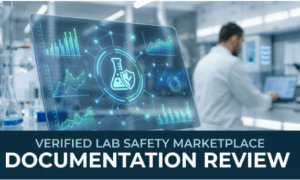When most people think of moving house, they picture bubble wrap, cardboard boxes, and the inevitable scramble to find missing keys. But behind the scenes of every seamless relocation is a layer of smart technology that turns chaos into control. Today, the moving industry is undergoing a quiet revolution—one powered by cloud software, real-time tracking, automation tools, and AI-driven logistics.
Whether you’re moving across the street or across the country, the difference between a stressful move and a smooth one often comes down to the systems your removalist uses. Let’s take a closer look at the technology powering modern moving companies and why it matters to homeowners.
1. Real-Time Fleet Tracking: Know Where Your Belongings Are
GPS-based tracking has become a standard for removalists who want to provide transparency and peace of mind. With real-time vehicle monitoring, customers can check where the truck is, how far it has traveled, and when it will arrive. This isn’t just a gimmick; it’s a key trust-builder for families handing over their lives’ possessions to a crew of movers.
More advanced providers use route optimization software that adjusts on the fly to avoid traffic, road closures, or weather disruptions. By streamlining the journey, companies save fuel and time, benefits passed on to the customer in the form of lower costs and fewer delays.
2. Automated Inventory Management
Gone are the days of handwritten item lists. Digital inventory systems now allow removalists to scan and catalogue every box and item, often using QR codes or RFID tags. These systems track what was packed, where it is in the truck, and when it was delivered to the destination.
Not only does this reduce the risk of lost or damaged items, but it also enables quicker claims processing and easier unpacking. Companies like DNS Removals are leveraging digital checklists and custom packing software to take the guesswork out of the equation.
3. Customer Portals & Communication Hubs
Modern removalists often offer customer-facing dashboards where clients can manage bookings, upload documents, update contact details, and even chat with their move coordinator. These systems centralize communication and reduce the back-and-forth that typically plagues relocation.
It’s a game-changer, especially for business moves, where timing and clarity are critical. In the Business Relocations space, for instance, dedicated tech platforms allow companies to schedule downtime, coordinate with internal teams, and track office equipment relocation in real-time.
4. AI-Powered Move Estimators
Providing a fast and accurate quote used to involve a home visit, measuring tape, and a clipboard. Today, many moving companies use AI-powered estimators that analyze photos or videos of the space and generate a quote within minutes.
Some systems use machine learning models trained on thousands of past jobs to fine-tune estimates based on volume, distance, access points, and timing. The result? Faster onboarding, fewer surprises, and a more streamlined experience for both customers and providers.
5. Load Optimization & Safety Sensors
Software that models how to load a truck for optimal weight distribution has reduced damage rates and improved fuel efficiency. These systems calculate how to fit items in a limited space like a game of Tetris—but with safety and compliance in mind.
Some movers even equip their trucks with IoT sensors that monitor temperature, humidity, and shock during transit. These features are especially useful when moving sensitive items like electronics, art, or instruments.
6. Workflow Automation Behind the Scenes
On the backend, robust CRMs (Customer Relationship Management systems) and workflow automation tools keep the operation humming. From sending SMS confirmations and invoicing to dispatching teams and tracking reviews, modern platforms allow leaner teams to do more with less.
DNS Removals, for example, integrates scheduling software with field service apps to ensure every team member has the right instructions, timing, and customer notes before a single box is touched. The result is fewer mistakes, better coordination, and happier customers.
Why It All Matters
To the average homeowner, these technologies may remain invisible. But they have a direct impact on the moving experience. Real-time updates reduce anxiety. Automated workflows prevent delays. Smart logistics cut down costs.
The next time you plan a move, it’s worth asking more than just, “How many trucks do you have?” Instead, ask: “What systems do you use to manage the move?” The answer will tell you everything you need to know about how smooth your experience will be.
As in many industries, those who embrace innovation are leaving the laggards behind. And for customers, that means less stress, better value, and the confidence that someone, somewhere, has their stuff under control—thanks to tech.





























